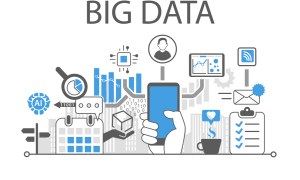🕑 Reading time: 1 minute
A digital elevation model (DEM) is a 3-dimensional illustration of a surface, typically a terrain region. It’s a grid-based structure having array numbers oriented to depict the terrain attributes such as slopes or aspect values. In simple terms, it is an accurate digital representation of the topography.
You roam around with a digital elevation model right in your pocket!
Confused? It’s Google Maps.

DEM can be done for the earth’s surface as well as other planet’s surface. It quantifies the characteristic of the land. It can be represented as a raster which is a grid of x and y coordinates or a vector-based triangular irregular network (TIN).
Each unit of DEM is in the form of a square. The overall shape of the DEM grid can be a square or rectangle.
DEM vs DTM vs DSM
Data elevation Model (DEM) is often confused with Digital Terrain Model (DTM) and Digital Surface Model (DSM).
DTM represents the bare ground without any plants and buildings. In contrast to DTM, DSM represents the earth's surface and includes all objects on it.
DEM is used as a generic term for DTM and DSM.

ArcGIS is a commonly used platform for mapping DEM.
DEM Generation Techniques
DEM can be generated through multiple means and techniques. The most relevant techniques are as follows:
1. Using survey toposheets (contours, point heights)
It is a spatial interpolation technique. It is done with the help of Geographic Information System (GIS). The data of the topographic map is scanned and digitized to form sample elevation points and contours. A digital elevation model is formed by merging these two data.
This method was used extensively before remote sensing came into existence.
2. Stereo-pairs (SPOT, Cartosat datasets, etc.)
Stereo-pairs are a pair of flat perspective images of the same scene attained from slightly different points of view. It is a remote sensing technique. Some devices particularly help to capture such images. Datasets are attained from SPOT and Cartosat satellites for the same.
3. Thermal Infrared Data
This method uses remote sensing. The radiations given out by the ground surface is detected.
4. Radar Data pairs
A technique called SAR interferometry is used to attain a pair of perspective images from Radar Data. Sentinel is a popularly known satellite to give radar data pairs.
5. LIDAR data
LIDAR (Light detection and ranging) is a well-known remote sensing technique. A highly accurate 2D or 3D dataset of the surface can be achieved using laser light.

LIDAR data has a high demand. It is most often used to generate digital elevation models. It is cost-effective as compared to photogrammetry, a method to obtain details of physical objects on a surface.
Applications in Civil Engineering
1. Surveying
DEM is most used to get conventional topographic data of a particular region. Soil mapping and geological studies can also be done using DEM.
2. Cut-and-fill calculations
Earthwork calculations, especially for roads or railroads, can be done using DEM and the ArcGIS software.
3. Risk assessment
A seismic survey can be carried out using DEM. The rock structure will give insights on threats such as landslides and earthquakes. Flood management can also be done after a thorough study of the topography.
4. Site planning
Topography and slope are studied for planning the site layout. The planning has to be considering underground utilities. DEM provides accurate data on the same.
5. Urban planning
Architects and engineers can plan the residents/user’s visibility of a proposed building, taking into consideration the surrounding aspects.
6. Water resources management
Contours, elevation points, and catchment area details of a water body are attained from DEM. Volumetric calculations regarding flow accumulation and flow direction for building reservoirs and dams can be done.

FAQs
It is used to get a digital representation of the topography
DEM gives a digital quantitative model of a topographic surface and DTM represents the bare ground without any plants and buildings.
DEMs can be created using remotely sensed data or by spatial interpolation technique.
Read More: 5 Ways Drones are Revolutionizing the Construction Sector


